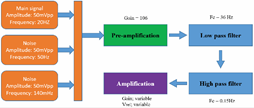文章目录
- snmp六种操作简述
- Get(获取操作):
- Get Next(获取下一个操作):
- Get Bulk(批量获取操作):
- Set(设置操作):
- Inform(通知操作):
- Trap(陷阱操作):
- trap操作
- 代理程序
- 管理程序
- 注意
snmp六种操作简述
Get(获取操作):
Get 操作用于从管理设备向代理设备获取指定 OID(对象标识符)的值。
管理设备发送 Get 报文包含要获取的 OID 列表,代理设备则根据这些 OID 返回对应的值。
Get Next(获取下一个操作):
Get Next 操作用于从代理设备获取比指定 OID 更大的第一个 OID 的值。
管理设备发送 Get Next 报文包含一个或多个 OID,代理设备则返回比这些 OID 大的第一个 OID 的值。
Get Bulk(批量获取操作):
Get Bulk 操作允许一次获取多个 OID 的值,减少交互次数,提高效率。
管理设备发送 Get Bulk 报文指定起始 OID、请求的个数等参数,代理设备返回相应的值。
Set(设置操作):
Set 操作用于向代理设备设定指定 OID 的值,用于配置设备的参数。
管理设备发送 Set 报文包含要设置的 OID 和对应的值,代理设备根据指定的 OID 进行配置。
Inform(通知操作):
Inform 操作用于向管理设备发送一个通知,通知管理设备某些事件的发生。
代理设备主动发送 Inform 报文给指定的管理设备,通知特定的事件或状态。
Trap(陷阱操作):
Trap 操作用于代理设备向管理设备发送一个告警或事件通知,通知管理设备发生了某些重要的事件。
代理设备可以主动发送 Trap 报文给一个或多个管理设备,告知管理设备设备的状态或发生的事件。
这些操作是 SNMP 协议中常用的几种,用于实现设备间的监控、通知和配置等功能。通过这些操作,网络管理员可以监控网络设备的状态、配置参数、响应事件等,帮助及时发现和解决网络问题
trap操作
1.管理程序开启监听
2.代理程序去对某个oid发起trap操作
3.管理程序监听到trap,并打印
代理程序
#define COLDSTART "1.3.6.1.6.3.1.1.5.1"
#define PAYLOADID "1.3.6.1.4.1.11.2.16.2"
#define PAYLOAD "SNMP++ Trap Send Test"
#define ZYXID "1.3.6.1.4.1.11.2.16.3"
#define ZYX "zyx is so great"
#define ENTERPRISE "1.3.6.1.2.1.1.1.2.0.1"
int main(int argc, char **argv)
{
Snmp::socket_startup(); // Initialize socket subsystem
//---------[ make a GenAddress and Oid object to retrieve ]---------------
UdpAddress address( "127.0.0.1"); // make a SNMP++ Generic address
if ( !address.valid())
{ // check validity of address
cout << "Invalid Address or DNS Name, " << argv[1] << "\n";
}
Oid oid( COLDSTART); // default is ColdStart
//---------[ determine options to use ]-----------------------------------
snmp_version version=version2c; // default is v2
u_short port=161; // default snmp port is 161
OctetStr community("public"); // community name
Oid ent(ENTERPRISE); // default enterprise
//----------[ create a SNMP++ session ]-----------------------------------
int status;
Snmp *snmp = new Snmp(status, "127.0.0.1");
if ( status != SNMP_CLASS_SUCCESS)
{
cout << "SNMP++ Session Create Fail, " << snmp->error_msg(status) << "\n";
return 1;
}
//--------[ build up SNMP++ object needed ]-------------------------------
Pdu pdu; // construct a Pdu object
Vb vb; // variable binding object to use
vb.set_oid(PAYLOADID); // example oid for trap payload
vb.set_value(PAYLOAD); // example string for payload
pdu += vb; // append the vb to the pdu
Vb vb2;
vb2.set_oid(ZYXID);
vb2.set_value(ZYX);
pdu += vb2;
pdu.set_notify_id( oid); // set the id of the trap
pdu.set_notify_enterprise( ent); // set up the enterprise of the trap
address.set_port(port);
CTarget ctarget( address); // make a target using the address
ctarget.set_version( version); // set the SNMP version SNMPV1 or V2
ctarget.set_readcommunity( community); // set the read community name
//-------[ Send the trap ]------------------------------------------------
cout << "SNMP++ Trap to " ;
cout << " Community=" << community.get_printable() << endl << flush;
SnmpTarget *target;
target = &ctarget;
status = snmp->trap( pdu,*target);
cout << "SNMP++ Trap Send Status = " << snmp->error_msg( status) << "\n";
Snmp::socket_cleanup(); // Shut down socket subsystem
}
管理程序
#ifdef SNMP_PP_NAMESPACE
using namespace Snmp_pp;
#endif
using namespace std;
void callback( int reason, Snmp *snmp, Pdu &pdu, SnmpTarget &target, void *cd)
{
cout<<"callback"<<endl;
Vb nextVb;
int pdu_error;
GenAddress addr;
target.get_address(addr);
UdpAddress from(addr);
if(reason != -7)
{
cout << "reason: " << reason << " "<< "msg: " << snmp->error_msg(reason) << " "<< "from: " << from.get_printable() << " ";
}
else
{
cout << "from: " << from.get_printable() << " ";
}
pdu_error = pdu.get_error_status();
if (pdu_error)
{
cout << "Response contains error: "<< snmp->error_msg(pdu_error)<< endl;
}
Oid id;
pdu.get_notify_id(id);
cout << "ID: " << id.get_printable() <<endl;
for (int i=0; i<pdu.get_vb_count(); i++)
{
pdu.get_vb(nextVb, i);
cout << "Oid: " << nextVb.get_printable_oid() << ": "<< "Val: " << nextVb.get_printable_value() << " "<<endl;
}
if ( pdu.get_type() == sNMP_PDU_INFORM)//当请求是inform时开始回应
{
cout << "pdu type: " << pdu.get_type() << endl;
cout << "sending response " << endl;
nextVb.set_value("This is the response.");
pdu.set_vb(nextVb, 0);
// sleep(3);
int status =snmp->response(pdu, target);
if ( status == SNMP_CLASS_SUCCESS)
{
cout<<"success to response";
}
else
{
cout << "fail to reponse:" << snmp->error_msg(status) << "\n";
}
}
cout <<"--------------------------------------------------" <<endl;
}
int main(int argc, char **argv)
{
int trap_port= 161; // no need to be root
//----------[ create a SNMP++ session ]-----------------------------------
int status;
Snmp::socket_startup(); // Initialize socket subsystem
Snmp snmp(status); // check construction status
if ( status != SNMP_CLASS_SUCCESS)
{
cout << "SNMP++ Session Create Fail, " << snmp.error_msg(status) << "\n";
return 1;
}
OidCollection oidc;
TargetCollection targetc;
cout << "Trying to register for traps on port " << trap_port << "." << endl;
snmp.notify_set_listen_port(trap_port);//设置监听端口
status = snmp.notify_register(oidc, targetc, callback, NULL);//注册回调函数,当有trap到来时会触发回调函数
if (status != SNMP_CLASS_SUCCESS)
{
cout << "Error register for notify (" << status << "): "<< snmp.error_msg(status) << endl;
exit(1);
}
else
{
cout << "Waiting for traps/informs..." << endl;
}
snmp.start_poll_thread(1000);
cout << "press return to stop\n";
getc(stdin);
snmp.stop_poll_thread();
Snmp::socket_cleanup(); // Shut down socket subsystem
}
代理程序运行截图

管理程序运行截图

管理程序先启动,开始监听。出现红色框打印字符。当代理程序运行的时候,出现绿色框打印字符
注意
在trap操作中,代理程序发起trap操作。管理程序只需要接受这个操作就行了。是不需要回复代理程序的。如果需要管理程序回复,那个操作应该时inform。













![[论文笔记] Pai-megatron-patch cpu-offload 改到 Qwen2](https://i-blog.csdnimg.cn/direct/12f7d93f5fb244de88d174ec0f9df20e.png)





